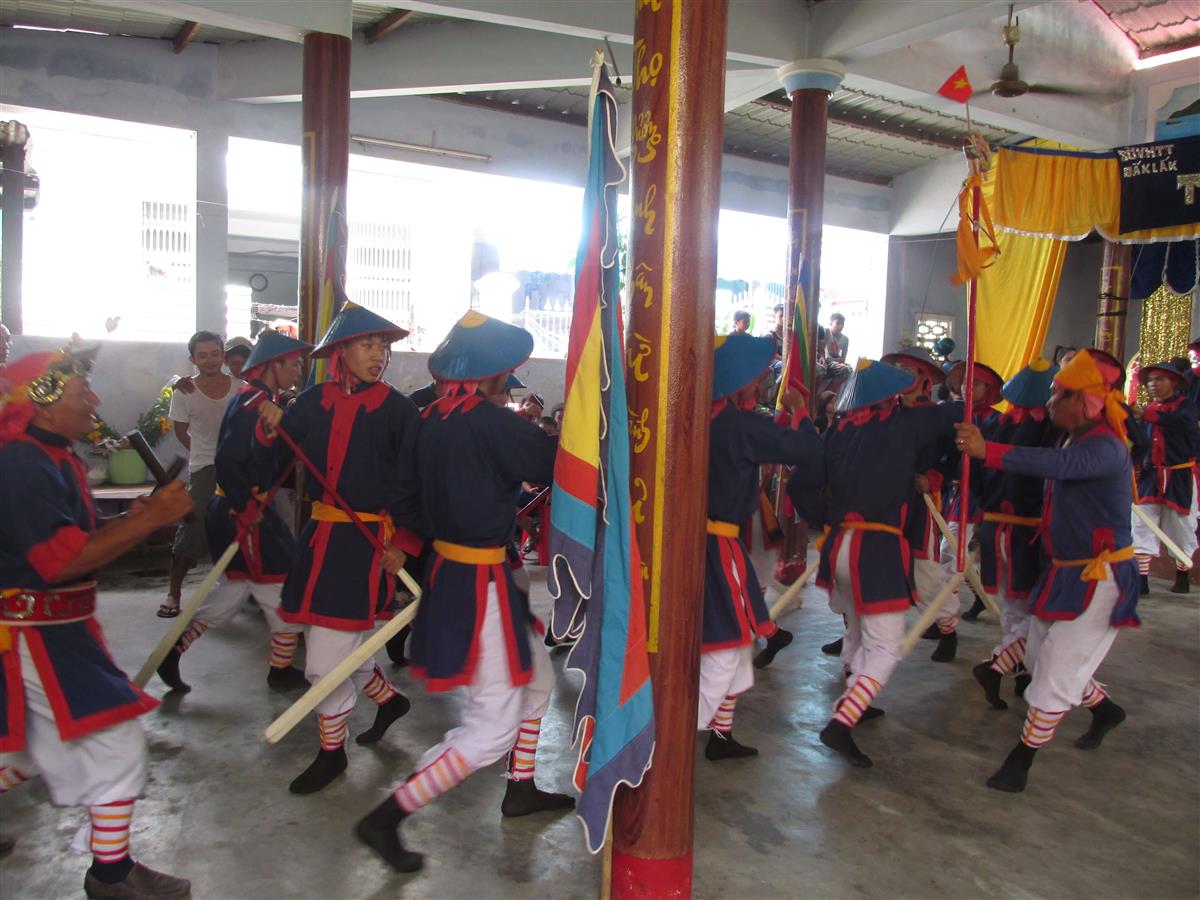Description
Dinh - Truong Tay Mausoleum is located at 73, Tran Phu Street, belonging to Tay Hai residential group, Vinh Nguyen ward, Nha Trang city, Khanh Hoa province. From the beginning of Tran Phu Street, go to the end of the road, to Cau Da (Chut), near Cau Da Villa slope, look to the left to see the communal house - Truong Tay mausoleum. The monument can be reached by land and sea transport.
Truong Tay communal house is not like other agricultural communal houses in Nha Trang, because people in the village mainly live by fishing, so in addition to worshiping the Citadel, they also worship Ong Nam Hai. The current location of the communal house - mausoleum was originally Ong's mausoleum, and the Truong Tay communal house in those days was located next to the top of Chut mountain, the corner of the road to Cua Be[1]. In 1943, the Japanese army during the construction of Nha Trang airport fired mines to get rocks at Chut island (also known as Canh Long mountain). The shaking of soil and rock made Truong Tay communal house, which was already degraded, in danger of collapsing. Faced with such a situation, the elders in the village discussed in two directions, one is to move the communal house to elect Mr. Han[2], the other is to move to Ong's mausoleum and they decided to move the communal house to Ong's mausoleum for convenience in their work. Worship. In 1958, Truong Tay communal house - mausoleum was rebuilt, located in a campus and worship space.
The communal house - Truong Tay mausoleum has its own characteristics unlike many other monuments, that is, there are two gates, showing the characteristics of the relic: the west gate is the ritual gate of the communal house and the east gate is the ritual gate of the mausoleum. However, the sacrifice and the main hall are turned to the East, the main direction of Ong's mausoleum. Communal house - mausoleum was built in a 602.10 m2 campus, roofed with western tiles, roof system with ancient floors, combined with embossed dragon and phoenix patterns to create ancient lines for the relic.
From 1958 to now, the communal house has undergone a number of restoration and embellishment times:
- In 1997, due to the expansion of Tran Phu Street, the communal house - mausoleum lost a part of its land, so they had to retreat to the west gate and build a new gate, moving the Tien Hien house to its present position.
- In 2003, re-built martial arts.
- In 2006, built Am Soul Temple, set up Ta Ban and Huu Ban altars in the Tien Hien house and re-roofed tiles in the great communal house.
From the east, looking at the relic, there are the following work items: Nghi Mon and surrounding walls, courtroom, martial arts, great communal house (tomb), Tien Hien, Am Soul Temple, east house, west house.
Communal house - Truong Tay mausoleum worships Thanh Hoang, Ong Nam Hai, Tien Hien, Hau Hien and Temple of Sound Soul.
Today, Truong Tay communal house - mausoleum still retains the diaphragms, couplets, incense burners, relics, antiquities and nine royal titles given to the communal house and mausoleum by the Nguyen kings.
During the two resistance wars against the French colonialists and the American imperialists, Truong Tay communal house and mausoleum as well as many other communal houses in Nha Trang city was the place to nurture revolutionary cadres, a place of communication and gathering of the masses. people participate in the struggle to defend the Fatherland. The area around the communal house - mausoleum that day was sparsely populated, the communal house - mausoleum was almost deserted, few people passed by. On the other hand, this is a convenient location for traveling between the mainland and the sea, so the communal house - mausoleum became a secret contact place for revolutionary soldiers and a place to hide weapons and documents.

According to the tradition of the people living along the coast working as a fisherman, every time he "swallowed" ashore, they buried him in a very solemn ceremony. After two years, they reburied him and built a mausoleum to worship him. The West School had many times when he was "lucky", but only held the death anniversary of the "cavalry" two main times. On the altar he has a very large skeleton, but only his body (middle part). According to the old men, he "lucky" drifted to three places, the first part in Phan Rang, the middle part at Truong Tay mausoleum and the tail part at Cu Lao mausoleum (the communal house - Cu Lao mausoleum, Vinh Tho ward, city. Nha Trang).
Every year, Truong Tay communal house - mausoleum organizes two worshiping ceremonies in Spring and Autumn, as people are used to calling "Spring and Autumn Two Periods". Nam Hai's death anniversary is on January 25 every year, so the management board of the relic combines to pray for the spring to pray for "National peace and people's peace", praying for fishermen to go to the sea to have smooth sailing and a bountiful harvest. Dinh - Truong Tay Mausoleum organizes the biggest festival in the autumn, two days of the 16th and 17th of the 7th lunar month every year. This is the anniversary of the death of Mr. Nam Hai and the sacrifice of Than An.
Recognizing the typical historical and cultural values of Truong Tay Communal House and Tomb, Khanh Hoa Provincial People's Committee issued Decision No. 1519/QD-UBND dated August 22, 2007 recognizing Truong Tay Communal House and Tomb as a Relic. provincial history and culture.
[1] now is the area of the H180 petroleum unit - Ministry of Defense.
[2] now is the branch location of Khanh Hoa Petroleum Company.